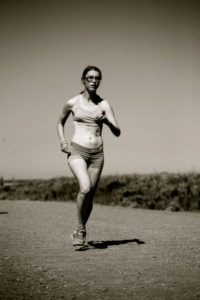In my previous post, I wrote about how worry and pedantry can consume you after experiencing an extreme illness. I want to talk a little more about what that can look like.
In September of my senior year of high school, I developed a very sudden, progressive illness. Over three months I lost tolerance for any exertion, not to mention dropping a quarter of my weight, spiking fevers and night sweats, growing erythema nodosum that ate through my lower legs and made walking very painful, weathering near-constant abdominal cramps and frequent diarrhea, spitting into a cup every few seconds from waterbrash, and enduring vast personality changes with intense depression, anxiety, and weeping. In the month prior I had been quite healthy; cheerfully reading college guides, training with the cross country team, and researching alternative diets.

In late November I had gotten so bad that I was finally hospitalized. In the hospital a surgeon consulted with me about having a colectomy, where my entire large intestine would be removed, as it was so diseased and ulcerated that it may have been beyond repair. Fortunately, a biologic drug rapidly reversed the inflammation. After I was discharged from the hospital in early December, colon intact and symptoms dramatically improved, my parents and I were still traumatized by how drastically our life circumstance had changed in a few short months. They had both had to cut their work hours significantly in order to care for me round the clock. We had been told that this was caused by a chronic condition that would require indefinite management.
It became our mission to somehow ensure that I would never suffer like this again. We wanted a complete cure of something that I had been told I would now deal with for the rest of my life.
And so, the heightened state of alert continued. I kept a symptom diary documenting every food I ate and every bowel movement, which my parents would read and review. I followed the strict Specific Carbohydrate Diet protocol that I had started in October, eating a handful of the allowed foods from the intro stage and only introducing a new food every four days. My mom spent the better portion of her days cooking for me, making homemade yogurt, and sourcing unconventional ingredients. I saw an array of alternative practitioners – an acupuncturist, a homeopath, a naturopath, a psychic healer, a BioSET expert. Any activities or outings with friends were computed well ahead of time in terms of food needs and parental support; I could do almost nothing truly spontaneously.

As I slowly regained my stamina (which I’m not sure the practitioners or our fanaticism actually had much to do with), I drove myself mad with worry. During that time, I had a nagging belief that I had caused my illness somehow – perhaps through poor diet, exercising too strenuously, stress, or moral failing. This was my way of feeling in control; if I could cause an illness, I could also reverse it somehow. But this logic also meant that any minor slip-up could be the one that sent me into another 3-month horror show of severe infirmity. If I accidentally ate something not allowed on my strict diet, or if I failed to tell an important detail to my homeopath, or if I overexerted a wee bit and was tired the next day – that mistake, to me, meant a one-way ticket back to hospital.
Additionally, my time in online support groups for illness had overexposed me to New Age, mind-controls-the-body theories – think Rhonda Byrne, Bruce Lipton and Joe Dispenza. I took it all way too literally. I believed that worrying too much about illness would itself make me ill, which trapped me in a bizarre infinite loop. I remember the anxiety would particularly come on at night, and I would sit awake crying to my mom about how scared I was, and getting scared because I was scared. I think it came on at night because the day I had been hospitalized, I had gone to bed feeling stable and awoke screaming and feverish later in the night. The night was the unknown, the leap of faith; I thought I would go to bed normal and wake up with no intestines. And that it would have been my fault.
None of these fears quite ended up coming true. While I continued to weather great difficulties with my health over the next six years, I never once got as severely ill and dependent as I had during that first flare-up. I had to accept that maybe there was no real way I could have prevented this; that the cause was just not known. Or further – that even knowing the precipitating cause doesn’t always mean much as far as how to reverse the illness. (For example, many people who have mast cell activation disorder developed it after an infection like Lyme, but Lyme antibiotics are usually not sufficient to treat the disorder.)
Starting around April of 2012, I gradually returned to a normal diet (except for being gluten-free due to a diagnosis of early-stage celiac). I let myself exercise more, starting with just one lap around my block and building to 3-mile jogs. Although my body did not respond as well to the exercise as it used to (possibly due to anemia), it was clear that I wasn’t doing something harmful. Slowly but surely, the circuitry of fearing my every move broke.

Yet something had shifted in me by this time that has never fully resolved. Perhaps it was the natural inversion of the “healthy” version of myself pre-illness who still had some very questionable beliefs about what allowed her to be happy, and why people get sick or unhappy. It’s often not the “illness itself” that we fear. It’s what we associate with it; perhaps a loss of identity, a loss of community or friends, a loss of self-expression, a loss of ability to provide for oneself or others. I will address this in a future writing if I am able.




